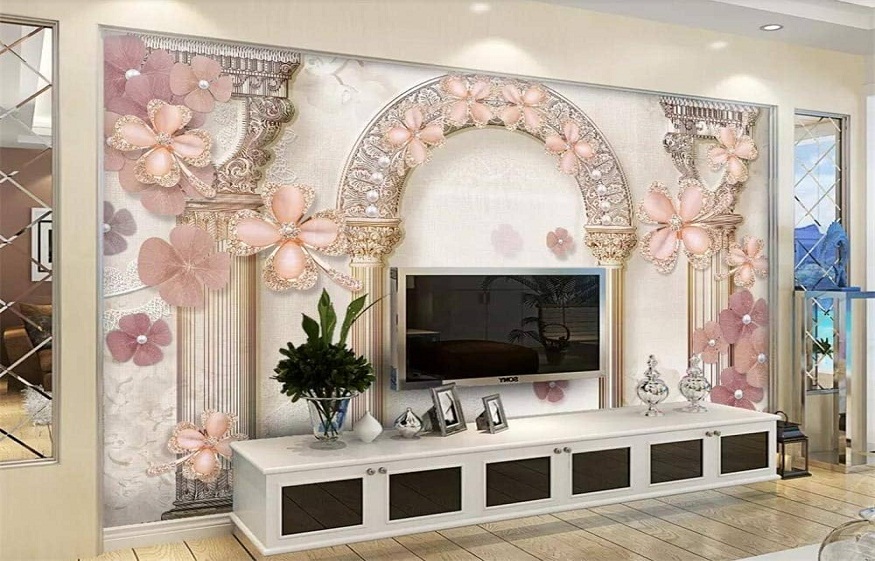Mastering the Art of Choosing Durable and Delightful Wallpaper

Wallpaper, once relegated to the realm of outdated trends, has experienced a remarkable resurgence, transforming from a simple wall covering to a powerful tool for expressing personal style and enhancing interior spaces.Choosing the right ROMAN wallpaper products involves more than just aesthetic appeal; it requires careful consideration of durability, functionality, and the specific demands of each room. This article delves into the art of selecting wallpaper that not only delights the eye but also stands the test of time.
Understanding Wallpaper Materials: The Foundation of Durability
The longevity and suitability of wallpaper are largely determined by its material composition. Understanding the characteristics of different types is the first crucial step in making an informed decision.
- Vinyl Wallpaper: This is arguably the most popular and versatile option, prized for its exceptional durability and ease of maintenance. Vinyl wallpapers are coated with a layer of PVC (polyvinyl chloride), making them highly resistant to moisture, stains, and scratches. This makes them ideal for high-traffic areas like hallways, kitchens, and bathrooms, where spills and scuffs are more likely. Within the vinyl category, you’ll find various sub-types, including solid vinyl, paper-backed vinyl, and fabric-backed vinyl, each offering slightly different levels of thickness and texture.
- Non-Woven Wallpaper: Made from a blend of natural and synthetic fibers, non-woven wallpaper offers a breathable and dimensionally stable alternative to traditional paper. It is generally more durable than pure paper wallpaper and is easier to install and remove. Non-woven wallpapers are often paste-the-wall varieties, simplifying the application process.They offer good resistance to tearing and stretching, making them a user-friendly choice for DIY enthusiasts. While not as moisture-resistant as vinyl, some non-woven options have a protective top layer that offers moderate water resistance, making them suitable for areas with occasional moisture.
- Paper Wallpaper:This is the traditional type of wallpaper, often appreciated for its intricate designs and unique textures. However, paper wallpaper is generally less durable than vinyl or non-woven options. It is susceptible to moisture damage, staining, and tearing, making it best suited for low-traffic, dry areas like bedrooms and formal living rooms. While some paper wallpapers have a protective coating, they typically require more careful handling and cleaning.
- Natural Fiber Wallpaper: Made from materials like grass cloth, bamboo, cork, or linen, natural fiber wallpapers offer unique textures and an organic aesthetic. These wallpapers are often hand-woven, adding a touch of artisanal charm to a space. However, they tend to be more delicate and Cleaning can also be more challenging, often requiring specialized methods. They are best suited for lower-traffic areas where their natural beauty can be appreciated without the risk of significant wear and tear.
Assessing Your Space: Matching Material to Environment
The intended location of the wallpaper is a critical factor in determining the most suitable material. Consider the following aspects of each room:
- Traffic:High-traffic areas like hallways and entryways demand durable, scrubbable wallpapers like vinyl to withstand frequent contact and potential scuffs. Lower-traffic areas offer more flexibility in material choice.
- Sunlight Exposure: Areas with direct sunlight can cause some wallpapers to fade over time. Consider choosing wallpapers with UV-resistant coatings, particularly for lighter colors and delicate patterns.
- Wall Condition: Uneven or imperfect walls might benefit from textured wallpapers, which can help to conceal minor flaws. Thicker vinyl wallpapers can also offer better coverage.
Beyond Material: Exploring Delightful Designs and Textures
Once you’ve narrowed down your material options based on durability and practicality, the exciting part begins: selecting a design that resonates with your personal style and enhances your interior décor.
- Pattern Scale and Room Size: Consider the size of your room when choosing a pattern. Large, bold patterns can make small spaces feel overwhelming, while smaller, intricate designs can get lost in large rooms. Medium-scale patterns often strike a harmonious balance.
- Color Palette and Mood: Colors have a significant impact on the ambiance of a room. Light and neutral colors can create a sense of spaciousness and tranquility, while bolder hues can add energy and personality. Consider how the wallpaper color interacts with existing furniture, flooring, and accessories.
- Texture and Dimension: Textured wallpapers add visual interest and tactile appeal to a space. Embossed vinyls can mimic the look of fabric or plaster, while natural fiber wallpapers offer inherent texture. Consider how the texture will play with light and shadow in the room.
Conclusion: Investing in Enduring Style
Choosing durable and delightful wallpaper is an investment in the long-term beauty and functionality of your home. By understanding the properties of different materials, carefully assessing your space, and considering your aesthetic preferences, you can master the art of selecting wall coverings that not only enhance your décor. With thoughtful selection, proper installation, and diligent maintenance, your chosen wallpaper will continue to bring joy and style to your interiors for years to come.






